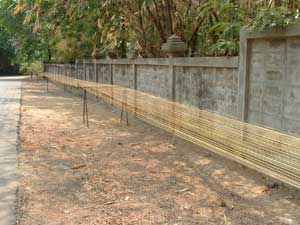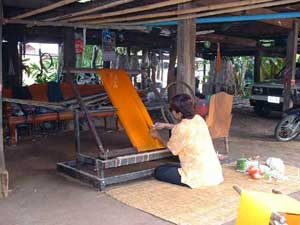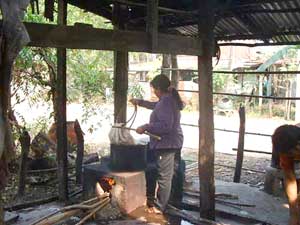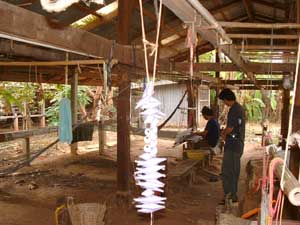| Home | Calendar | Fashion Show | Workshops | Artist In Residence | Instructor | Textile Travels | Links | Pictures |
Chonabot is a small village in North Eastern Thailand. The weaving process can be seen everywhere. Pre wound warps, fifty yards or longer are laid out on frames lined up on the side of the road. Two people wind the warps onto a flat board. They alternately fold the board, adjust the sections of warp, and stretch back against the length of the warp to tighten it. The new warp is tied to the old warp rather than being rethreaded. Weavers can be seen working on their looms under many of the houses in Chonabot. The looms are three harnesses, weaving two up and one down, with the front of pattern on the reverse side. Intricate weft ikat patterns are tied onto yarns stretched on frames. Each weft thread is adjusted to make the pattern line up correctly.
 Stretching warp on support frames before winding onto back beam |
 |
 Winding back beam |
 Winding weft in preparation for tying |
 Patterns are wrapped with plastic ribbon in preparation for dyeing. |
 Dyed pattern weft and solid warp drying. |
 Measuring out chemical dyes. |
 Two kilos of silk are going into the dyepot. |
 Excess water is squeezed out then put into a washing machine for further extraction. |
 Tying new warp onto old. |
 The looms are amazingly simple. |
 Tying on new warp. |
 Putting sizing onto the warp in a weaving "factory". |
 Bobbins strung in order waiting to be woven. |
 Weaving in the mudmee weft. |
